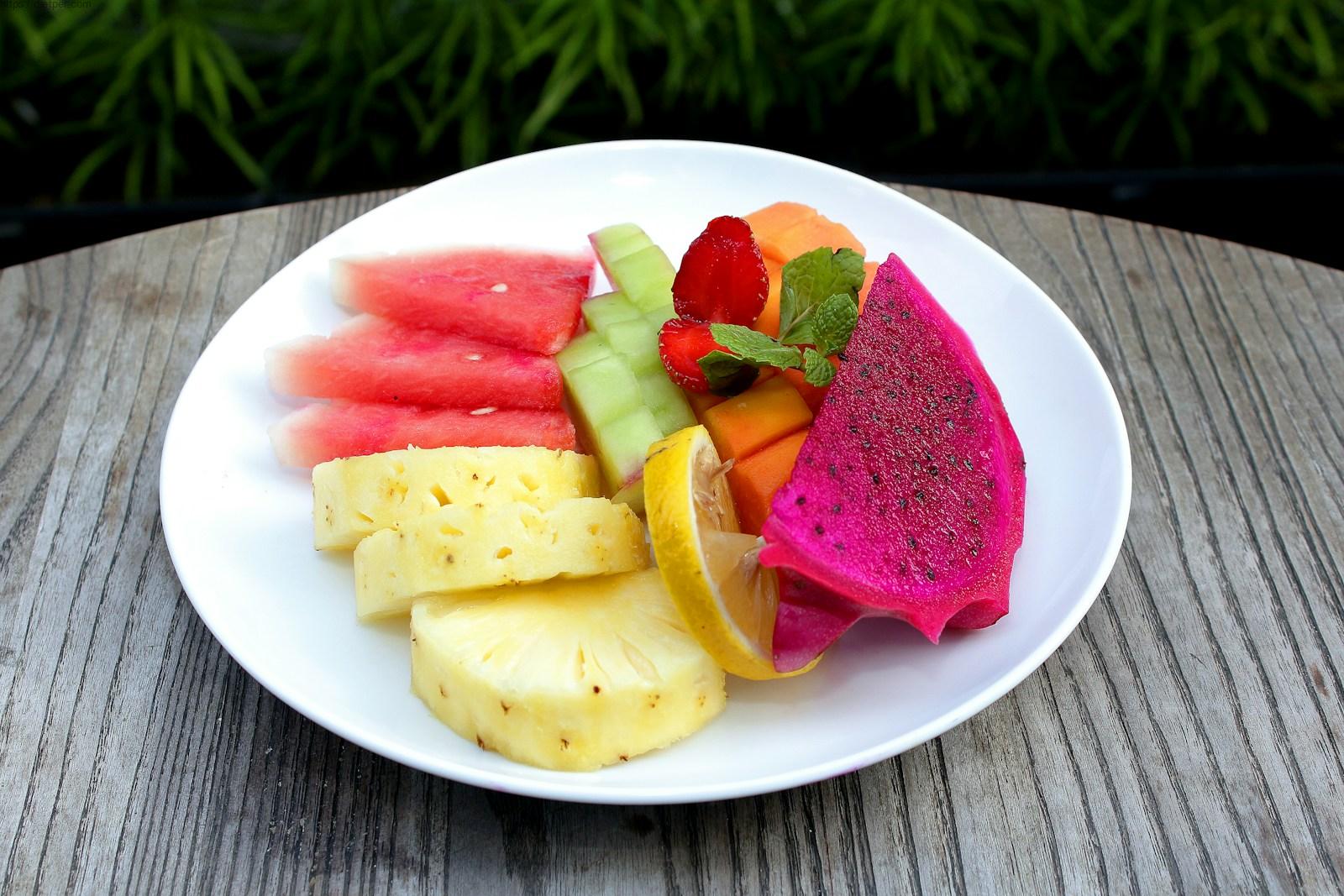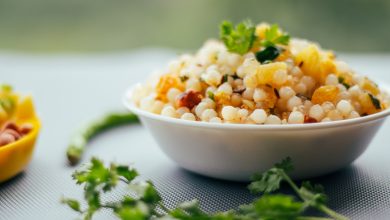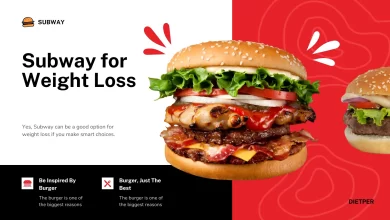Understanding the concept of energy density
Energy density refers to the amount of energy, typically measured in calories or kilojoules, contained in a given volume or weight of food. Understanding the concept of energy density is essential for making informed choices about food consumption, especially for those aiming to manage their weight or maintain a healthy diet.
Here are the key points to understand about energy density:
-
High Energy Density vs. Low Energy Density:
- Foods can be categorized as high energy density or low energy density based on the number of calories they provide per unit of volume or weight.
- High-energy density foods have more calories for a given volume, while low-energy density foods have fewer calories for the same amount.
-
Volume and Weight Considerations:
- High-volume low-energy density foods are often rich in water and fiber, making them physically larger or heavier without contributing excessive calories. Fruits and vegetables are common examples.
- High-energy density foods are typically more concentrated in fats and sugars, providing a higher calorie content in a smaller volume. Examples include nuts, oils, and sugary snacks.
-
Satiety and Portion Control:
- Low-energy density foods tend to be more filling due to their larger volume, promoting a feeling of satiety. This can be beneficial for those looking to control portion sizes and manage weight.
- High-energy density foods, on the other hand, may not provide the same level of fullness, potentially leading to overeating if portion sizes are not carefully monitored.
-
Balancing Nutrient Density:
- Nutrient density and energy density are related concepts. Nutrient-dense foods provide a high amount of essential nutrients (vitamins, minerals, etc.) relative to their calorie content. Balancing energy density with nutrient density is key for overall health.
-
Weight Management:
- Choosing foods with lower energy density can be a helpful strategy for weight management. It allows individuals to consume satisfying portions with fewer calories, making it easier to create a calorie deficit for weight loss or to maintain a healthy weight.
-
Food Choices and Health:
- A diet consisting of mainly high-energy density foods may contribute to excessive calorie intake and potentially lead to weight gain or other health issues.
- Emphasizing low-energy density foods, such as fruits, vegetables, lean proteins, and whole grains, supports a diet that is not only lower in calories but also rich in essential nutrients.
-
Hydration and Water Content:
- Water content significantly influences the energy density of foods. Foods with high water content, like soups, fruits, and vegetables, often have lower energy density and contribute to hydration.
Benefits of incorporating High volume low calorie foods in your diet
Incorporating high-volume, low-calorie foods into your diet offers numerous benefits for your overall health and well-being. Here are some key advantages:
-
Weight Management:
- High volume low calorie foods can help with weight management by allowing you to eat larger portions without consuming excess calories. This promotes a feeling of fullness, making it easier to control your overall calorie intake and manage your weight.
-
Satiety and Fullness:
- These foods are often rich in water, fiber, and nutrients, promoting a sense of satiety and fullness. This helps prevent overeating and reduces the likelihood of snacking on high-calorie, less nutritious options.
-
Nutrient Density:
- Many high-volume, low-calorie foods are nutrient-dense, meaning they provide a high concentration of essential vitamins, minerals, and antioxidants relative to their calorie content. This ensures that you get a variety of nutrients important for overall health.
-
Digestive Health:
- The fiber content in these foods supports digestive health by promoting regular bowel movements and preventing constipation. Fiber also helps maintain a healthy gut microbiome, which is linked to various health benefits.
-
Stable Blood Sugar Levels:
- Foods with lower energy density, such as whole grains and legumes, release energy slowly, leading to more stable blood sugar levels. This can help prevent energy crashes and reduce cravings for sugary snacks.
-
Hydration:
- High-volume foods, especially fruits and vegetables, often have high water content. This not only contributes to overall hydration but also adds to the volume of the food, enhancing the feeling of fullness.
-
Heart Health:
- Many High volume low calorie foods, such as fruits, vegetables, and whole grains, are heart-healthy choices. They are often low in saturated fats and cholesterol, helping to maintain cardiovascular health.
-
Diverse Nutrient Intake:
- Including a variety of High volume low calorie foods in your diet ensures a diverse intake of nutrients. This can contribute to overall well-being and reduce the risk of nutrient deficiencies.
-
Promotion of Healthy Eating Habits:
- Incorporating these foods encourages a focus on whole, minimally processed options. This promotes a healthier overall eating pattern, reducing the reliance on high-calorie, low-nutrient foods.
-
Reduced Risk of Chronic Diseases:
- A diet rich in high-volume, low-calorie foods has been associated with a lower risk of chronic diseases, including heart disease, diabetes, and certain cancers.
-
Versatility in Meal Planning:
- These foods are versatile and can be incorporated into a wide range of dishes, making meal planning enjoyable and diverse. This helps maintain long-term adherence to a healthy eating pattern.
Top fruits and vegetables that are both filling and low in calories
When it comes to finding foods that are both filling and low in calories, fruits and vegetables are the perfect choice. Packed with essential nutrients, fiber, and water, these high-volume foods can keep you satisfied without adding excessive calories to your diet.
1. Apples: Not only are apples delicious, but they are also incredibly filling. With their high fiber content, apples take longer to digest, keeping you feeling fuller for longer periods. Plus, they are low in calories, making them a perfect snack or addition to salads.
2. Berries: Whether it’s strawberries, blueberries, or raspberries, these bite-sized fruits are full of flavor and low in calories. They are also packed with antioxidants and fiber, providing a satisfying and nutritious option for any meal or snack.
3. Broccoli: This green cruciferous vegetable is not only low in calories but also high in fiber and water content. Its crunchy texture and vibrant taste make it a versatile ingredient in salads, stir-fries, or as a side dish.
4. Cauliflower: Another low-calorie vegetable that can be used in various ways is cauliflower. It can be mashed, roasted, or made into a delicious cauliflower rice. With its mild taste and impressive nutritional profile, cauliflower is an excellent choice for those looking to increase their vegetable intake.
5. Spinach: Popeye’s favorite leafy green, spinach, is a nutrient powerhouse that is low in calories and high in fiber. Whether sautéed, added to salads, or blended into smoothies, spinach adds a satisfying bulk to your meals without contributing excessive calories.
Strategies for portion control and mindful eating
Portion control and mindful eating are effective strategies for maintaining a healthy diet, managing weight, and fostering a positive relationship with food. Here are some practical tips to help you implement these strategies:
1. Be Mindful of Hunger and Fullness:
- Pay attention to your body’s hunger and fullness cues. Eat when you’re hungry and stop when you’re comfortably satisfied. Avoid eating out of boredom, stress, or other emotional triggers.
2. Use Smaller Plates and Bowls:
- Choose smaller plates and bowls to help control portion sizes. Research suggests that people tend to eat less when using smaller dishware, as it creates the illusion of larger portions.
3. Measure Portions:
- Use measuring cups, a food scale, or visual cues to become familiar with appropriate portion sizes. This can be particularly helpful when serving items like rice, pasta, or snacks.
4. Eat Slowly and Chew Thoroughly:
- Take your time to enjoy each bite. Eating slowly gives your body a chance to signal fullness, reducing the likelihood of overeating. Chew your food thoroughly to aid digestion and savor the flavors.
5. Practice Mindful Eating:
- Engage your senses while eating. Pay attention to the colors, textures, and flavors of your food. Put away distractions like phones or TVs, allowing you to focus on the act of eating.
6. Start with Smaller Portions:
- Serve yourself smaller portions initially. You can always go back for more if you’re still hungry, but starting with a smaller amount helps prevent overeating.
7. Be Aware of Liquid Calories:
- Be mindful of beverages, as they can contribute significant calories. Opt for water, herbal tea, or other low-calorie options instead of sugary drinks or high-calorie beverages.
8. Plan and Prepare Meals:
- Plan your meals and snacks in advance to avoid impulsive eating. Prepare portioned meals and snacks, making it easier to control your intake.
9. Listen to Your Body:
- Tune in to your body’s hunger and fullness signals rather than relying on external cues. Trust your body to guide you in determining when and how much to eat.
10. Avoid Distractions:
– Eating in front of the TV or computer can lead to mindless overeating. Create a designated eating space, free from distractions, to focus on your meals.
11. Be Conscious of Emotional Eating:
– Recognize the difference between physical hunger and emotional cravings. Find alternative ways to cope with stress, boredom, or other emotions, such as going for a walk or practicing relaxation techniques.
12. Practice Portion Distortion Awareness:
– Be aware of portion distortion, especially when dining out. Restaurants often serve larger portions than necessary. Consider sharing a dish or asking for a to-go box to save part of your meal for later.
13. Choose Nutrient-Dense Foods:
– Opt for nutrient-dense foods that provide essential vitamins and minerals without excess calories. This helps ensure you meet your nutritional needs while controlling calorie intake.
14. Stay Hydrated:
– Drink water throughout the day, as thirst can sometimes be mistaken for hunger. Staying hydrated can help you better gauge your body’s true hunger signals.
15. Practice Moderation, Not Deprivation:
– Allow yourself to enjoy your favorite foods in moderation. Depriving yourself may lead to cravings and overindulgence later. It’s about finding a balance that works for you.

Final Words
Incorporating High volume low calorie foods into your diet can be a game-changer when it comes to staying satisfied and reaching your weight loss goals. By focusing on foods that are not only nutritious but also fill up your plate, you can enjoy a satisfying meal without consuming excessive calories.
Whether it’s loading up on fiber-rich vegetables, opting for lean proteins, or choosing whole grains, there are countless options available to keep you feeling full and content. Remember, it’s not just about the quantity of food but also the quality.
By choosing nutrient-dense options, you can nourish your body while still enjoying delicious flavors. So, next time you’re planning your meals, consider incorporating some of these High volume low calorie foods to make every bite count. Your taste buds and waistline will thank you!





